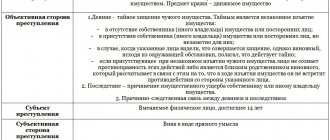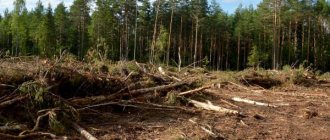251 art.
The Criminal Code of the Russian Federation provides for punishment for an environmental crime - air pollution. An important resource for human life support is air, which cannot be purified in any way. For example, water can be passed through a special filter before drinking. The air atmosphere is not limited by boundaries and does not have a specific shape or size. By polluting and deteriorating the air in one place, air currents carry particles of harmful elements to another territory, locality, or country. Multi-channel free hotline Legal advice on criminal law. Every day from 9.00 to 21.00
Moscow and region: +7 (495) 662-44-36
St. Petersburg: +7 (812) 449-43-40
Article 251 of the Criminal Code of the Russian Federation (atmospheric pollution)
Violation of the prescribed requirements for the release of substances into the environment occurs in active and passive forms. Active – using treatment facilities despite their malfunction. Passive – violation by employees of job descriptions when it is possible to use treatment plants.
Pollution or other changes in the natural qualities of airspace are generally accepted by law as illegal results. Pollution is the impregnation of space with destructive elements in excess of the permissible maximum permissible concentration. The change suggests an increase in the accumulation of synthetic components that affect transparency, the amount of ozone, and warming temperatures.
Current problems in the world due to air pollution are:
- Greenhouse effect.
- Acid rain.
- Smog.
- Ozone holes.
All together has a detrimental effect on both nature and humans.
The Criminal Code provides for liability for violating the ban. The public danger lies in undermining the safety of the environment, deteriorating well-being and human health.
The main objects of encroachment are the environmental safety of society, in qualified personnel - the well-being of individuals in society, and in especially qualified personnel - their lives.
Commentary to Art. 251 Criminal Code
1. The objective side includes the following acts: a) violation of the rules for the release of pollutants into the atmosphere; b) disruption of the operation of installations, structures or other objects. A mandatory sign is a consequence in the form of pollution or other changes in the natural properties of the air.
2. Atmospheric air pollution - the entry into the atmospheric air or the formation in it of harmful (pollutant) substances in concentrations exceeding the hygienic and environmental standards for atmospheric air quality established by the state. A pollutant is a chemical or biological substance or a mixture of such substances found in the atmospheric air and which, in certain concentrations, has a harmful effect on human health and the environment.
3. Another change in the natural properties of air involves a negative change in temperature, energy, wave, radiation and other physical properties of atmospheric air that have a harmful effect on human health and the environment.
4. Special subject of a crime - a person responsible for compliance with the rules for the emission of pollutants into the atmosphere or the operation of installations, structures and other objects.
5. Part 2 specifies causing harm to human health through negligence; Moreover, according to the Criminal Code (Chapter 16), liability can arise for the careless infliction of only grievous harm to health.
Stipulated penalties
Criminal liability for air pollution:
- Failure to comply with the norms for the eruption of harmful substances into the environment, resulting in pollution and transformation of air characteristics, is compensated by a penalty of 80 thousand rubles or withholding of wages for 6 months. It is prohibited to work in a specific service for a period of up to 5 years. Compulsory or penitentiary labor and detention for 3 months may be assigned.
- Actions resulting in deterioration of health - a fine of 200 thousand, correctional and other labor or a prison term of 2 years.
- Acts that led to the death of an individual - forced labor from 2 to 5 years, imprisonment for up to five years.
The main penalties are fines, various types of work, and arrest.
Article 251. Moment of transfer of a share in the right of common ownership to the acquirer under an agreement
Ruling of the Supreme Court of the Russian Federation dated January 27, 2017 N 301-ES16-13752 in case N A38-3075/2014 Having re-examined the presented evidence according to the rules of Article 71 of the Arbitration Procedure Code of the Russian Federation, the appellate court, with whose conclusions the district court agreed, guided by Articles 209, 218, 223, 244, 251 and 551 of the Civil Code, Article 35 of the Land Code, Article 16 of the Federal Law of July 21, 1997 N 122 “On state registration of rights to real estate and transactions with it”, taking into account the explanations set out in paragraph 61 of the joint resolution of the Plenums The Supreme Court of the Russian Federation and the Supreme Arbitration Court of the Russian Federation dated 04/29/2010 N /22 “On some issues arising in judicial practice when resolving disputes related to the protection of property rights and other property rights”, overturned the decision of the first instance and satisfied the claim, stating validity of the purchase and sale agreement dated May 16, 2013, proper execution by entrepreneur N.N. Anokhin. obligations to pay for the disputed share and evasion of the company "ZOLAN INVEST GROUP" from registering the transfer of the right to the corresponding share.
Determination of the Judicial Collegium for Civil Cases of the Supreme Court of the Russian Federation dated February 28, 2017 N 4-КГ16-74
Circumstances indicating a change by Nikolaev D.S. and Shevchishina M.E. The court did not establish the regime of joint property of spouses provided for by law, and therefore the provisions of Articles 245 - 251 of the Civil Code of the Russian Federation, to which the appellate court referred, were not subject to application when dividing the jointly acquired property of the parties.
Determination of the Judicial Collegium for Economic Disputes of the Supreme Court of the Russian Federation dated March 10, 2017 in case No. 301-ES16-13752, A38-3075/2014
Having re-examined the presented evidence in accordance with the rules of Article 71 of the Arbitration Procedure Code of the Russian Federation, the appellate court, with whose conclusions the district court agreed, guided by Articles 209, 218, 223, 244, 251 and 551 of the Civil Code, Article 35 of the Land Code, Article 16 of the Federal Law of July 21. 1997 N 122 “On state registration of rights to real estate and transactions with it” (hereinafter referred to as the Law on State Registration), taking into account the explanations set out in paragraph 61 of the joint Resolution of the Plenums of the Supreme Court of the Russian Federation and the Supreme Arbitration Court of the Russian Federation dated 04/29/2010 N/22 “On some issues arising in judicial practice when resolving disputes related to the protection of property rights and other property rights”, overturned the decision of the first instance and satisfied the claim, stating the validity of the agreement dated 05/16/2013, proper execution by the entrepreneur N.N. Anokhin . obligations to pay for the disputed share and the evasion of the ZOLAN INVEST GROUP company from registering the transfer to the plaintiff of the right to the corresponding share in ownership.
Judicial practice under Article 251 of the Criminal Code of the Russian Federation
Despite the importance of clean air for all residents of Russia, judicial practice shows that 10 people were convicted under the article under comment.
The main pollutants are:
- metallurgical enterprises;
- glass factories;
- processing enterprises, for example, (Novolipetsk Iron and Steel Works, Norilsk Nickel, paint and varnish factories).
The magazine “Takie Dela”, according to the Ministry of Natural Resources, publishes a list of the most polluted cities in Russia: Norilsk, Krasnoyarsk, Lipetsk, Cherepovets, Magnitogorsk, Blagoveshchensk and others. In Krasnoyarsk, the level of maximum permissible concentrations of pollutants was exceeded 30 times. Moscow and the region account for an eighth of car emissions.
Air pollution was detected in the territory adjacent to the Nizhny Tagil Iron and Steel Works. Exceeding the maximum permissible concentration for ethylbenzene from 8 to 16 times. However, it was refused to initiate a case, since the investigation considers pollution only exceeding extreme thresholds. This case requires the creation of a resolution of the Constitutional Court of the Russian Federation (Article 251 of the Criminal Code of the Russian Federation with comments).
For a worker from the Saratov region, violation of the rules of technical operation of an asphalt mixing plant, which resulted in the release of chemical substances into the airspace, resulted in criminal liability according to the decision of the district court under Part 1. Article 251 of the Criminal Code of the Russian Federation.
Law enforcement practice regarding this crime is ambiguous, is subjective in nature, and often criminal cases are not initiated at all.
Article 251 of the Criminal Code of the Russian Federation: problems and solutions
Article 251 of the Criminal Code of the Russian Federation: problems and solutionsII International electronic visual conference “Innovative scientific research”Legal sciences Guzel Sharafutdinovna IbragimovaStudent of Tyumen State University, Tyumen, 3rd year [email protected]
Abstract: The scientific work examines the main problems associated with the application of criminal liability for air pollution. Solutions are proposed in order to increase the efficiency of implementation of norm 251 of the Criminal Code of the Russian Federation. Key words: Criminal Code, atmospheric air, pollution, atmosphere.
According to WHO, the total number of deaths associated with exposure to polluted air, both indoors and in the atmosphere, reaches 3 million per year. Russia occupies 3rd place in this list. According to the WHO International Agency for Research on Cancer, air pollution is the leading cause of cancer. Therefore, solving problems related to the legal regulation of air pollution is extremely urgent. Introduction
Of serious importance for the study are works devoted to the problems of legal regulation of atmospheric air pollution, such as: Popov I.V. (Problems of distinguishing crimes against the natural environment from administrative offenses in the field of environmental protection and natural resource management), Bokuts E.A (Article 251 of the Criminal Code of the Russian Federation (“atmospheric pollution”): problems of law enforcement practice), V.T. Tomina, V.V. Sverchkova and other scientists. Review of literature on the research topic
Criminal Code of the Russian Federation, Article 251. Atmospheric pollution 1. Violation of the rules for the release of pollutants into the atmosphere or violation of the operation of installations, structures and other objects, if these acts resulted in pollution or other changes in the natural properties of the air, 2. The same acts that caused harm through negligence human health3. Acts provided for in parts one or two of this article, resulting in the death of a person through negligence [1]. Description of the study
One of the most important problems in the application of this article is the lack of clearly defined criteria for such a concept as “atmospheric air pollution”. Ambient air pollution acc. from Art. 1 “On the protection of atmospheric air”: this is the entry into the atmospheric air or the formation in it of harmful substances in concentrations exceeding the hygienic and environmental standards for atmospheric air quality established by the state [2].
Such standards are maximum permissible concentrations (MPC). (the number of units of mass of a pollutant per unit volume of air (mg/m3), taken as 1 MPC) [3]. In accordance with the current legislation on the territory of the Russian Federation, atmospheric air pollution will occur in the event of a pollutant entering the atmosphere or forming in it in a concentration exceeding the maximum permissible concentration for a given type of substance [4].
In each case of exceeding 1 MPC (in the presence of all other necessary elements of a crime), the corresponding unlawful act must be qualified under Part 1 of Art. 251 of the Criminal Code of the Russian Federation? In accordance with the above, we will answer in the affirmative. However, then we notice that the boundary between a criminal and an administrative act is blurring. After all, Article 8.21 of the Code of Administrative Offenses of the Russian Federation provides for a similar offense, which differs only in the absence of a special permit.
OJSC Gazpromneft-Novosibirsk “violation of the terms of the permit for the emission of pollutants into the atmosphere by the filling shop of the gas station management allowed the actual amount of emissions of pollutants into the atmosphere to be exceeded by 5.9 times. At the same time, residential buildings from the gas station are located at a distance of 60 meters” [8]. Zotova S.V. "Zotov S.V. violated the rules for the emission of pollutants into the atmosphere and the operation of the installation, as a result of which the emission of formaldehyde exceeded the maximum permissible concentration by 6.3 times, and the emission of nitrogen dioxide exceeded the maximum permissible concentration by 6.8 times” [9]. Code of Administrative Offenses of the Russian Federation, Article 8.21. Criminal Code of the Russian Federation, Article 251 Judicial practice
Resolution of the Plenum of the USSR Supreme Court dated 07.07.83 N 4 “criminal liability for air pollution occurs in cases where the concentration of pollutants in the atmosphere, as well as the level of harmful physical effects on atmospheric air, exceed established standards, as a result of which harm has been caused or could have been caused to health people, agricultural production, fish stocks, flora and fauna" [5].
Approach No. 1 Introduction of administrative prejudice Article 275 of the Criminal Code of Belarus “Atmospheric air pollution through the entry of pollutants into the atmospheric air from emission sources in excess of established standards for permissible emissions and (or) temporary standards for permissible emissions of pollutants into the atmosphere (atmospheric air pollution), committed during years after the imposition of an administrative penalty for the same violation.” Administrative prejudice will make it possible to more effectively distinguish between crimes and administrative offenses.
Evaluation of this approach A clear delineation of the norms of administrative and criminal liability will not receive its criminal legal assessment for an act that entailed large-scale air pollution, but was committed for the first time [6]. A person who has committed an administrative offense will be warned about the possibility of criminal prosecution if he commits another one of the same offense [7]. "excessive mitigation of criminal liability."
Cost approach. Approach No. 2 Introduction of a monetary criterion for the criminalization of an act, which is immanently related to the amount of damage to the natural environment caused by the crime. difficulties arise when calculating the actual costs of environmental restoration; there are no methods for a comprehensive cost assessment of all the consequences that may be caused to the environment as a result of economic activities
GOST RF 56167-2014 Emissions of pollutants into the atmosphere. Method for calculating damage from an industrial enterprise to environmental objectsDetermining the amount of emissions in the presence of an emission permit Mᵢ = (Oфi - НВi) T278 Determining the amount of emissions in the absence of an emission permit Mᵢ = Oфi · T · 278В = ∑ni=1Y₃ᵢ Mᵢ + З₀B - damage, in rubles, caused by emissions of pollutants, Y₃ᵢ - specific costs for capturing and (or) neutralizing a substance, i - pollutant, n - amount of pollutants contained in emissions of pollutants into the atmospheric air, Mᵢ - amount of pollutant, determined by the formulas higher (in tons), Z₀ - costs necessary to determine the amount of damage, (rub.)
Approach No. 3 Quantitative approach Proponents of the approach propose using a certain number of times exceeding the maximum permissible concentrations of harmful substances as a criterion for criminal liability of air pollution. To correctly qualify an act, you need to know the amount of background pollution in a given area at the time immediately preceding the pollution. A negative impact that occurs over a long period of time with low MAC values will not receive its criminal legal assessment; a more detailed scientific study of this problem by competent specialists is required
Research results: In connection with the above, we propose to introduce the following standard: 1. Violations of the rules for the release of pollutants into the atmosphere or violation of the operation of installations, structures and other objects, if these actions resulted in an excess of the concentration of pollutants in the atmosphere, by a person subject to administrative punishment within a year for this act. 2. Violations of the rules for the release of pollutants into the atmosphere or violation of the operation of installations, structures and other objects, if these acts resulted in an excess of the concentration of pollutants in the atmosphere and caused major damage to the environment. 3. Acts provided for in part one or two of this Articles that caused the death of a person through negligence.
Conclusion In our opinion, the most acceptable is the combination of these approaches together, which would make it possible in the future to more specifically formulate the disposition of Art. 251 of the Criminal Code of the Russian Federation, eliminating from it all the inaccuracies that complicate its application in practice.
Recommendations These materials are of value to both researchers and practitioners. Changing the norm of Article 251 of the Criminal Code of the Russian Federation would contribute, on the one hand, to a more effective implementation of the principle of the inevitability of criminal liability for an environmental crime committed, and on the other, to the exclusion of cases of unjustified prosecution of citizens for criminal liability. Improvement of both environmental and criminal legislation is required. The norm of the criminal law providing for criminal liability for air pollution shows us a striking example of the interconnection of various branches of law that form one system of law.
Regulatory legal acts 1. Criminal Code of the Russian Federation dated June 13, 1996 N 63-FZ: according to comp. As of November 22, 2016 [Electronic resource] // Access from the reference and legal system “ConsultantPlus” (date of access: 12/10/2016).2. Federal Law “On the Protection of Atmospheric Air” dated 05/04/1999 N 96-FZ [Electronic resource] // Access from the reference and legal system “ConsultantPlus” (date of access: 12/10/2016). Links to sources
Books 3. Commentary on the Criminal Code of the Russian Federation (article-by-article) / A.V. Brilliantov, G.D. Dolzhenkova, E.N. Zhevlakov and others; edited by A.V. Brilliantova. 2nd ed. M.: Prospekt, 2016. T. 2. 704 p. 4. Commentary on the Criminal Code of the Russian Federation (edited by A.A. Chekalin; edited by V.T. Tomin, V.V. Sverchkov). — 3rd ed., revised. and additional — Yurayt-Izdat, 2006
Articles5.Bokuts E.Yu. The concept of “air pollution” used in the disposition of Art. 251 of the Criminal Code // Legality. 2011. N 12. P. 28 - 32.6. Bokuts E.A. Article 251 of the Criminal Code of the Russian Federation (“atmospheric pollution”): problems of law enforcement practice. [Electronic resource] // Access from the reference and legal system “ConsultantPlus” (date of access: 12/10/2016). 7. Popov I.V. Problems of distinguishing crimes against the natural environment from administrative offenses in the field of environmental protection and natural resource management [Electronic resource] // Access from the reference and legal system “ConsultantPlus” (date of access: 12/10/2016).
Practice materials8. Decision of the Sverdlovsk Regional Court of August 9, 2016 in case No. 33-13109/2016 [Electronic resource] // Access from the reference and legal system “ConsultantPlus” (date of access: December 10, 2016).9, Decision of the Ivanovo District court of the Ivanovo region in case 2-3090/2015 ~ M-3096/2015 [Electronic resource] // Access from the reference and legal system "ConsultantPlus" (date of access: 12/10/2016). 10. Decision of the Balakovsky district court of the Saratov region on criminal case No. 1-609(1)/2013 [Electronic resource] // Access from the reference and legal system “ConsultantPlus” (date of access: 12/10/2016).
Comments on the article
A release should be understood as the release into the atmosphere of substances harmful to the natural environment from a corresponding source. Violation of the rules for the release of pollutants into the atmosphere can be characterized by two points:
- committing actions directly prohibited by law;
- failure to comply with the grounds, order, volume, intensity, qualitative composition and other conditions of release.
Pollution is the saturation of atmospheric air with pollutants in excess of established standards for maximum permissible concentrations.
Another change in the natural properties of air is defined as a negative deviation from the pre-existing state of the atmosphere. It can manifest itself in an increase in the concentration of chemicals or suspended particles, affecting transparency, ozone content, or in changes in thermal conditions, radiation, electromagnetic and other indicators.
From the subjective side, a crime is characterized by an intentional or careless form of guilt.
The subject of the crime is a person who has reached the age of 16 years.
The qualifying feature of the crime is the infliction of harm to human health through negligence (see commentary to Article 246 of the Criminal Code). Causing the death of a person through negligence entails liability under Part 3 of Art. 251 CC.







